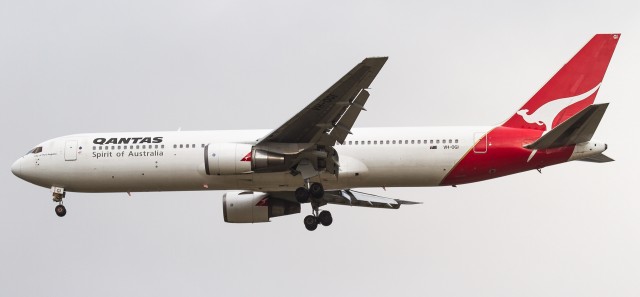
Qantas’ Boeing 767-338ER, a common sight in Australian skies over the past 30 years – Photo: Jacob Pfleger | AirlineReporter
The 27th of December marked the end of an era in Australian aviation. Qantas retired the Boeing 767 fleet from passenger service.
Let’s take a brief look at the history of this true workhorse and Australian icon that has been part of the Qantas fleet for almost 30 years. Qantas took delivery of its first 767, a -200 series extended range aircraft, in 1985. The type was first introduced on the carrier’s services to southeast Asia as well as on trans-Tasman and Pacific routes.
In 1987, the carrier placed an order for the larger -300ER series. The -300ER not only had a larger capacity but also an increased range and more powerful General Electric CF6-80 engines. The 767-300ER was delivered to Qantas in a two-class configuration. There were two variants of this configuration, one for international service which had 25 business class and 204 economy class seats, and the domestic configuration, which had 30 business class seats and 224 economy class seats.
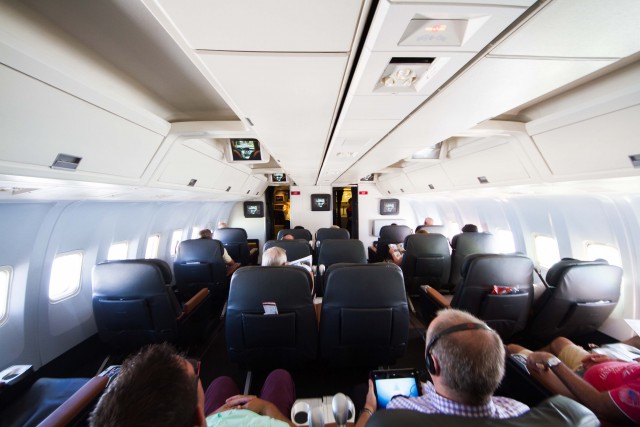
A unique configuration, 1-2-2 on the international version of the Qantas Boeing 767-338ER – Photo: Jacob Pfleger | AirlineReporter
The internationally-configured 767s were unique in that business class was configured in a 1-2-2 layout, and the 767s were the first Australian aircraft to offer in-seat IFE in business class. The economy cabin was also unique in that there was a “pod” at the front of the cabin for crew rest, as well as two rows of seats at the rear portioned off for additional crew rest.
Following the deregulation of the Australian domestic market in 1990, Qantas was permitted to once again operate domestic flight routes. With the introduction of the 767 into the fleet, and the domestic deregulation which allowed for increased passenger demand, Qantas used the 767 on domestic Australian flights. The domestic market is where the aircraft really became a true Australian icon. It was deployed on pretty much every major domestic route within the country; the most popular routes were the transcontinentals to Perth, as well as the main east coast triangle routes connecting Sydney, Melbourne, and Brisbane.
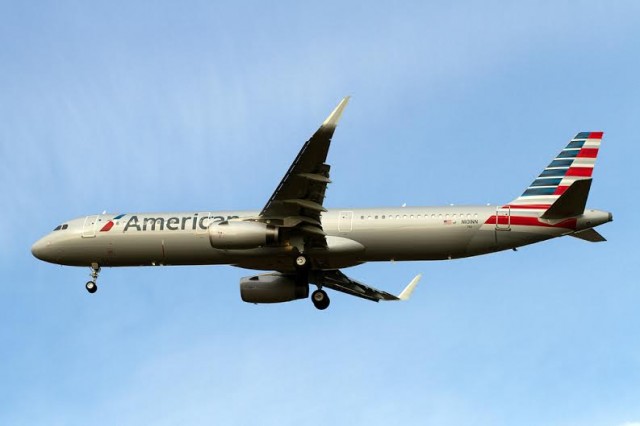
American’s new Airbus A321 in flight – Photo: Eric Dunetz
A while back, I viewed a tweet about an Air Traffic Control (ATC) conversation in New York, where JFK ATC got a little bit confused about an aircraft type. American Airlines (AA) Flight 32 was incorrectly called a ’œheavy’ aircraft, likely because for so long that flight was operated by a Boeing 767-200. Ever since AA debuted their new Airbus A321 on the LAX-JFK route, this flight no longer needs to use the “heavy” designation, but that didn’t stop the ATC staff from using old habits. It made me question, at what point does an aircraft become ’œheavy’?
When aircraft are approaching or departing an airport, they must use special designations to help avoid the wake turbulence from other aircraft. Larger aircraft, like a 767 or an A340, need more space behind them to prevent the wake vortices generated by the larger wing span from impacting other aircraft. The bigger the aircraft, the longer the distance.
The dangers are real, as all over the world a number of incidents have occurred that can be attributed to a wake vortex. From the crash of an XB-70 in the 60’s to some involving more modern aircraft in the last 10 years (including an A380 in Sydney).
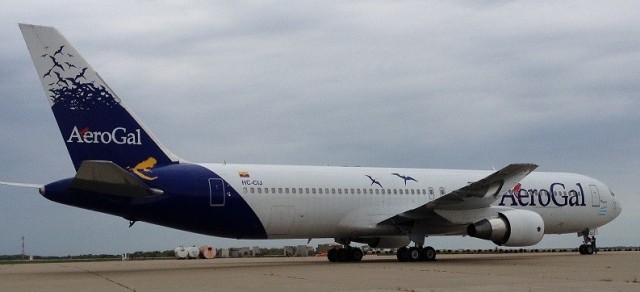
An AeroGal Boeing 767-300ER. Photo courtesy of Joe McBride, Kansas City Aviation Department.
I’ll be the first to admit it, I absolutely despise Eurowhite liveries. Unfamiliar with Eurowhite? The term refers to an all/mostly white plane with a bit of decoration here and there.
A Eurowhite livery is cheap, boring, uninspired and a huge loss from a branding and brand recognition perspective. Be that as it may, it’s a trend that started in Europe and quickly spread across the world. But not all is lost, let’s examine an airline that managed to take a boring concept and spruce it up a bit. Never thought I’d say it, but this is a Eurowhite livery that I’m a fan of.
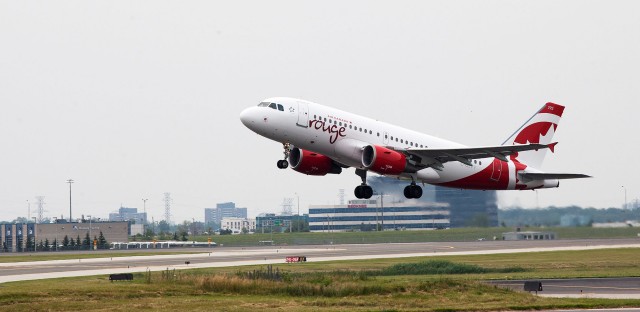
Air Canada rouge’s first flight takes off – A319 from YYZ to KIN
All photos courtesy: Air Canada rouge
With Monday morning’s A319 flight from Toronto (YYZ) to Kingston, Jamaica (KIN), Air Canada rouge became the second new Canadian airline to begin operation in as many weeks. Rouge’s startup fleet has 2 A319-100s and 2 767-300s, all previously flown by Air Canada. Initial Caribbean destinations for the A319s are in the Dominican Republic, Cuba, Costa Rica and Jamaica.
The 767s will fly to Athens, Edinburgh and Venice, all departing from Toronto or Montreal (YUL). More destinations will be added to the schedule as rouge receives additional aircraft from Air Canada. Many of their vacation routes will be transferred from Air Canada as the rouge fleet grows. They’re planning to ultimately have 20 767s and 30 A319s, as Air Canada takes delivery of 787s and additional 777s. The new airline has its own operating certificate, but is wholly-owned by Air Canada. It’ll be integrated into AC’s website and Aeroplan frequent-flier program.
Air Canada calls rouge a “new leisure airline”. It’s part of the new Air Canada Leisure Group, which includes Air Canada Vacations, which has been around for many, many years. The new Group competes with established Canadian tour operators/airlines Transat, Sunwing, and of course, Westjet. As rouge expands it’s US destinations, I wouldn’t be surprised if it tries to repatriate Canadian passengers heading to Plattsburgh and Niagara Falls NY, and Bellingham, WA for cheaper flights.
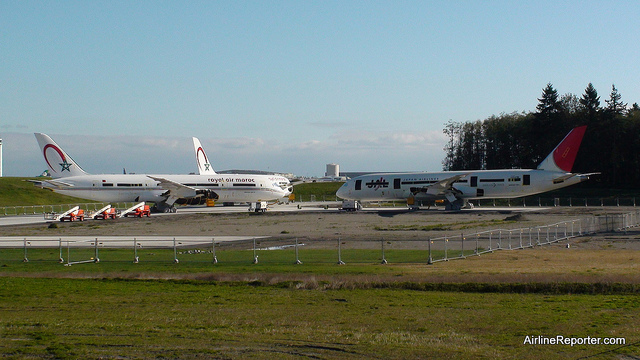
Two Royal Air Maroc and one JAL Boeing 787 Dreamliner next to the Future of Flight
Here it is, the beginning of October and for some odd reason we are having really nice weather in Seattle. Don’t get me wrong, I am not complaining. Knowing Saturday was probably going to be one of the last sunny days we are going to see around these parts and knowing Boeing towed three Boeing 787’s right next to the Future of Flight, I figured it was a really nice day to go visit Paine Field (KPAE) again.
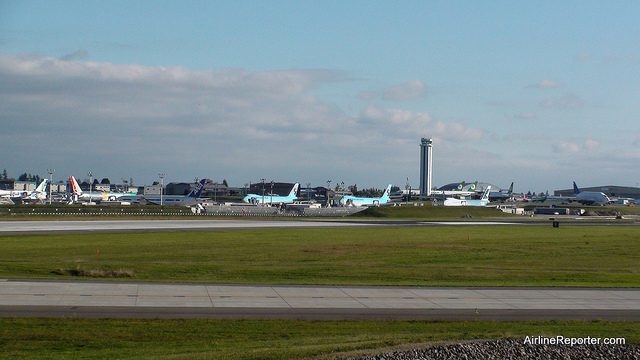
How many brand spak'n new Boeing aircraft can you identify here?
There are a lot of Boeing 787 Dreamliners sitting outside waiting for parts. There are so many, that Boeing is having to get creative with where they are parking the aircraft. There are now three 787 Dreamliners parked next to the Future of Flight and two more outside the Boeing hangars. The three by the Future of Flight are two Royal Air Maroc Dreamliners and one JAL. By the hangars is a JAL and one all white 787 (photo).
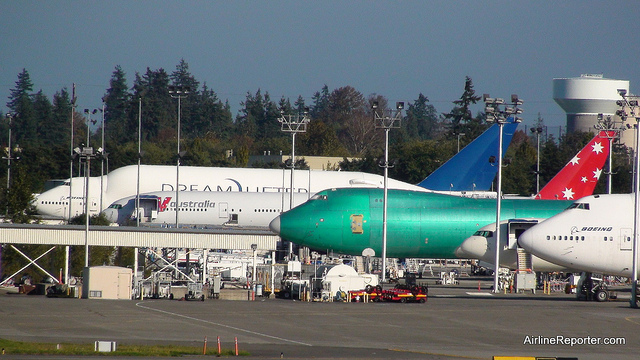
That's a lot of eye candy at Boeing's fuel dock
The Dreamliners aren’t the only thing overly impressive on this trip. There were also five aircraft sitting at the Boeing fuel dock. Two Dreamlifters, one Boeing 747-8, one Boeing 777 for V Australia and one Boeing 767 for JAL.
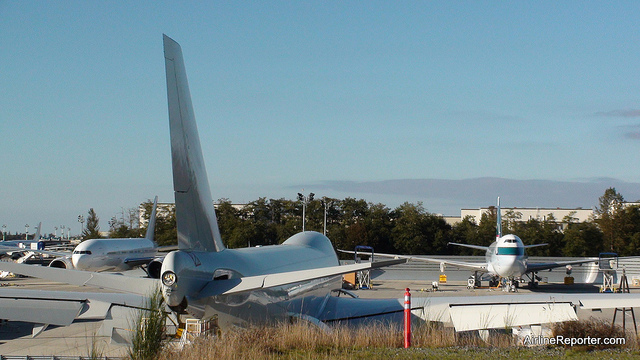
It is a stare off between Boeing 747-8's
On the east side are quite a few new Boeing 747-8s. The British Airways World Cargo 747 is still sitting with just a blue belly as it was a few weeks back. There is also a nice collection of Boeing 747-8F in Korean Air Cargo and Cathay Pacific liveries. There was also one that just has the rudder painted and is a Nippon Cargo Airlines 747-8F (photo).
Visiting Paine Field is always an awesome experience, especially when it is sunny. I feel very lucky to live just a quick 15 minute drive from one of the most interesting airports in the world.
CHECK OUT 51 PHOTOS OF AIRPLANES AT PAINE FIELD (KPAE)








